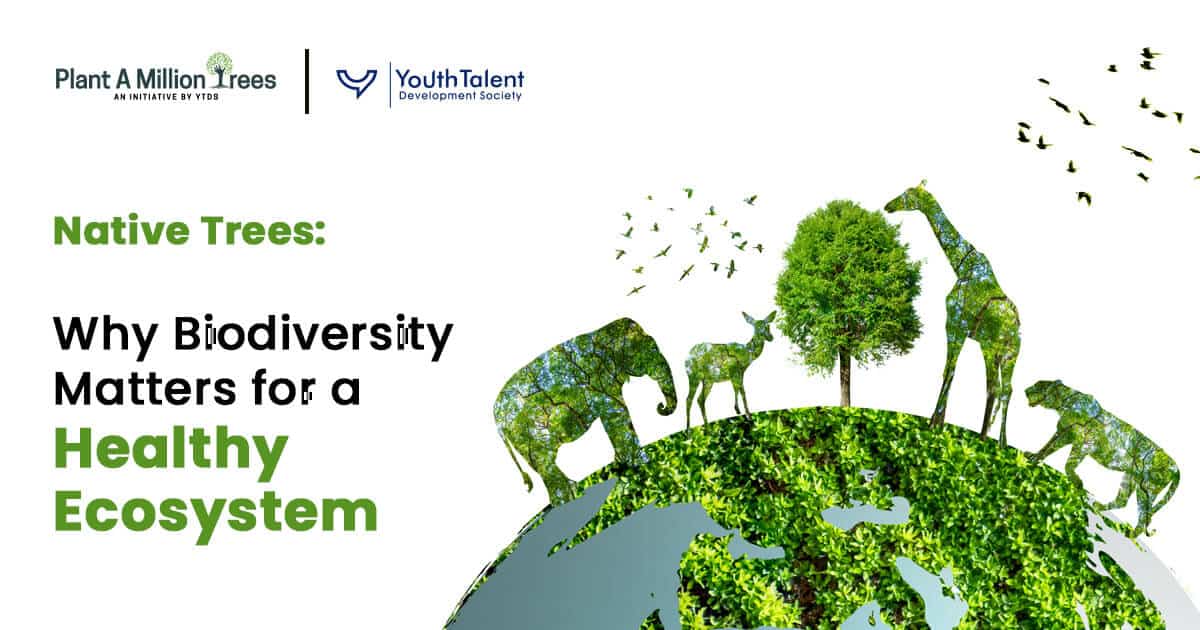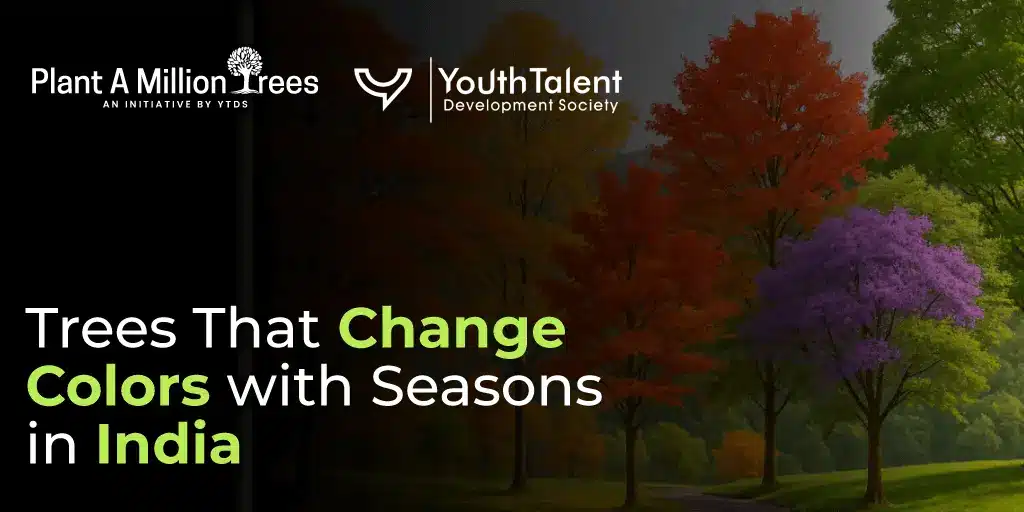Being able to wake up not to the buzzing of traffic, but to the singing of sunbirds and the...
Native Tree Species play a very important role in biodiversity conservation and contribute towards the maintenance of ecological health. From co-evolution with the local fauna, the very existence of native trees in the ecosystem cannot be compromised.
From providing food for native pollinators to the prevention of erosion, these native trees give ground for a range of ecological benefits that many exotic species simply cannot replicate.
This article thus focuses on the Importance of Biodiversity and how the planting of native trees will help with the restoration and preservation of ecological balance.
Introduction – Why Native Trees Matter
Supporting Wildlife, Soil, and Climate Naturally
Biodiversity stabilizes ecosystems. Native trees help biodiversity by:
- Providing habitat and food for native wildlife
- Building soil fertility and structure
- Feeding birds, insects, and pollinators that can benefit crops.
- Regulating climate and water cycles
Invasive Species vs. Native Plants: What’s the Risk?
They native and invasive tree species can disrupt the local ecosystem. Such species are generally devoid of natural herbivores due to which they spread rapidly and invade native trees. This would lead to:
- Reduce habitats for indigenous wildlife
- Increase susceptibilities for pests and diseases
- Altered soils chemistry and water availability.
Environmental Benefits of Native Trees
Planting Native Trees preserves the environment. Here are some primary benefits of native trees:
Soil Conservation and Native Trees
Native trees play a critical role in preventing soil erosion and stabilizing the land. Their deep root systems bind the soil together, especially in hilly or flood-prone areas, reducing the chances of landslides and topsoil loss.
Unlike exotic species, native trees have co-evolved with the landscape and are better suited to heal degraded lands, making them ideal for ecological restoration and long-term land conservation.
Carbon Sequestration: How Trees Fight Climate Change
Native trees are powerful tools for carbon sequestration, the process of capturing and storing atmospheric carbon dioxide (CO₂). Through photosynthesis, these trees absorb CO₂ and store it in their trunks, branches, and roots, helping to reduce greenhouse gas concentrations.
This makes planting native species a vital strategy in climate change mitigation and reducing your carbon footprint.
Water Conservation with Native Plants
One of the often-overlooked advantages of native trees is their low water requirement. Adapted to the local climate, native species need significantly less irrigation compared to non-native plants.
Their efficient water use makes them ideal for drought-prone regions, urban greening, and sustainable gardening, helping homeowners and cities alike conserve this precious resource.
Combine native tree planting with water conservation at home
Cleaner Air: Natural Purifiers in Your Backyard
Native trees improve air quality by filtering harmful pollutants like nitrogen oxides, ammonia, sulfur dioxide, and airborne particulates. They also release oxygen, improving the health and well-being of local communities.
When planted in urban areas, native trees act as natural air purifiers, creating cleaner, healthier living environments.
Your Native Tree Planting Guide
How to Choose the Right Trees for Your Region
The selection of the appropriate native trees depends on climate, soil type, and purpose:
- For Urban Areas: Deep-rooted native species that alleviate soil compaction.
- For Coastal Areas: Wind-resistant and salt-resistant species.
- For Dry Climates: Drought-resistant trees needing less irrigation.
Step-by-Step: Planting and Tree Care Made Easy
Here’s how to plant trees:
- Site selection: Identify a site where there would be ample sunlight and space for the roots to grow;
- Soil preparation: Improve soil quality by adding organic compost;
- Proper Planting: Dig a hole that is two times wider than the root ball and plant the tree to the specific height.;
- Watering & Mulching: Keeping the soil wet and apply mulch to supplies moisture and acts as a barrier to weeds;
- Maintenance Routine: Maintenance-pruning of dead branches and observation of pests or diseases.
Conserving Endangered Native Trees
hreats Facing Native Tree Species Today
However, while the native species are under pressure, here are some of the benefits that can be derived from their protection:
- Conservation of unique genetic traits;
- Preservation of traditional and cultural heritages;
- Protection of the natural habitat for wildlife.
What You Can Do: Local Action and Education
- Have you the heart to support the program for reforestation? Join in some local event tree plantation activity.
- Sustainable Forestry: Buy from the source in well-managed forests.
- Educate Others: For example, planting native trees and conservation.
Creating a Backyard Habitat for Wildlife
When a variety of native trees are planted, many birds, butterflies, and beneficial insects will be attracted; thus, for a successful backyard habitat:
- Use a mixture of trees, shrubs, and flowering plants to provide food and shelter.
- There should also be provisions made for wildlife with the construction of birdhouses and bee hotels, as well as sources of water.
- Do not use pesticides and fertilizers that could harm local inhabitants.
Best Trees for Your Region
The ideal native trees for your area depend on geographical and climatic conditions. Here are some examples:
- India: Banyan, Neem, Peepal, and Indian Rosewood
- North America: Oak, Maple, Pine, and Dogwood
- Europe: Birch, Beech, Hazel, and Willow
Frequently Asked Questions (FAQs)
Why should we plant native trees?
Native trees form a bond with wildlife by attracting animals from around the locality, purifying, and requiring less maintenance as compared to other trees.
How to identify native trees in my area?
You can identify native trees from a field guide, local botanical websites or any of the applications that identify trees according to their leaves, bark, and habitat.
Where to buy native tree saplings?
Native saplings are available from local nurseries, government forestry departments, or online suppliers of native plants.
Conclusion
Due to the significance of the environment to your well-being and health, embracing the call for biodiversity has become similarly important. It utilizes quite a number of thousands.
Diversifying ecosystems. Plant and protect Native Tree Species: that strengthens ecosystems and prevents endangered species while providing habitats for future generations.
Every effort from the very small ones such as planting a tree in your backyard to donating funds to big reforestation has counted in preserving this beautiful planet and its natural heritage.




